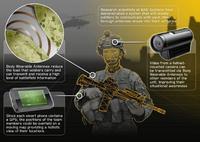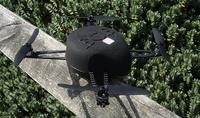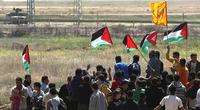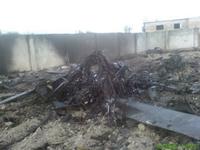-
Anti-magnet: to protect ships' hulls from mines
Researchers have created a new type of magnetic cloak which shields objects from magnetic fields — at the same time that it prevents any internal magnetic fields from leaking out; this “antimagnet” could be used to protect a ship’s hulls from mines that detonate when a magnetic field is detected
-
-
U.S. looks to keep Libyan WMD scientists away from terrorists

With Libyan rebels consolidating their hold over the country, the United States is looking to restart a State Department program designed to keep top Libyan biological and nuclear scientists from working for terrorist organizations or hostile nations; Libya’s new leaders have expressed their interest in working with the United States to keep track of Libyan WMD scientists and on other counter-proliferation programs, but the interim government has yet formally to respond to U.S. requests
-
-
Maintaining water quality
Scientists at Kansas State University and seven other collaborating institutions were recently awarded $3.3 million from the National Science Foundation (NSF) to conduct a-large scale study of how stream organisms influence water quality across North America
-
-
New vest offers GPS tacking and other information
Canadian company Laipac Technology is showing its S911 GPS Vest which the company describes as “a high coverage assault protection designed for military, tactical law enforcement and VIP personnel that demand the highest protection.”
-
-
Texas drought forces military to change training

A particularly severe drought in Texas has forced the military to change the way it trains its soldiers due to the risk of starting fires; law enforcement agencies would benefit from taking note of additional safety measures put into place
-
-
General Dynamics to integrate CBRN device in Army radios
General Dynamics C4 Systems announced last week that it will work with U.S. Army researchers to install wireless-networking chips on radios that can also detect the presence of dangerous chemicals on the battlefield
-
-
Body wearable antennas for soldiers, first responders

Body Wearable Antennas (BWAs) allow soldiers to communicate with their colleagues on the front line without the need for conventional radio whip-antennas which can be cumbersome and conspicuous; NWS can also be incorporate into the suits of fire-fighters for use during search and rescue, for police patrol team members to have the GPS locations of their colleagues, and in other hazardous industries such as mining, oil, and gas
-
-
Flying video camera will protect soldiers

Engineers have developed the U.K.’s first lightweight outdoor flying video camera which can fit in a soldier’s backpack; the UAV is designed to help spot hidden dangers and feed the real-time footage to goggles worn by the operator
-
-
BAE Systems shows invisibility cloak-wrapped vehicle
BAE Systems has tested an invisibility cloak that allows a vehicle to blend into its surroundings; sheets of hexagonal “pixels,” which can change temperature very rapidly, allow vehicles — even moving tanks — to match their surroundings, thus making them invisible
-
-
Michigan could dodge defense cuts

With Congress seeking to make potential cuts in defense spending and contractors bracing for reductions across the country, Michigan’s $385 billion defense industrial base remains optimistic as it could get by unscathed; key lawmakers say the types of services that Michigan’s defense industry provides could keep it from becoming the target of the newly formed Joint Selection Committee on Deficit Reduction
-
-
Israeli military develops new doctrine for dealing with civil unrest

The Israeli military is preparing for massive demonstrations by Palestinians in the West Bank and along Israel’s borders with neighboring Arab states — demonstrations which will follow the 20 September debate in the UN about whether to recognize Palestine as a state; Israeli snipers will be equipped with new laser finders so they can shoot at the feet of demonstrators, and the military has acquire a variety of non-lethal systems to help disperse unruly crowds
-
-
Antenna-equipped garments here
To make communications devices more reliable, researchers are working on incorporating radio antennas directly into clothing, using plastic film and metallic thread; the new antenna design has a range four times larger than that of a conventional antenna worn on the body — one that is used by American soldiers today
-
-
Micro Unmanned Ground Vehicle helps soldiers, first responders

Weighing just over ten pounds, Dragon Runner 10 (DR10) is small enough to carry in an assault pack and rugged enough to throw into buildings and hostile environments; the DR10 has multiple sensor and payload options, and thus is suitable for reconnaissance and surveillance missions to support small military units, patrols, and first responder teams
-
-
Autonomous multi-target, multi-user tracking capability
An autonomous multi-sensor motion-tracking and interrogation system reduces the workload for analysts by automatically finding moving objects, then presenting high-resolution images of those objects with no human input
-
-
Pakistan likely let China examine U.S. stealth helo

U.S. intelligence officials believe that Pakistan’s intelligence service allowed Chinese military engineers to examine the wreckage of a new stealth helicopter used in the raid that killed Osama bin Laden; the helicopter was damaged in the assault on bin Laden’s compound in Abbottabad, Pakistan in May and Navy SEALs were forced to leave it behind
-
More headlines
The long view
Bookshelf: Smartphones Shape War in Hyperconnected World
The smartphone is helping to shape the conduct and representation of contemporary war. A new book argues that as an operative device, the smartphone is now “being used as a central weapon of war.”
